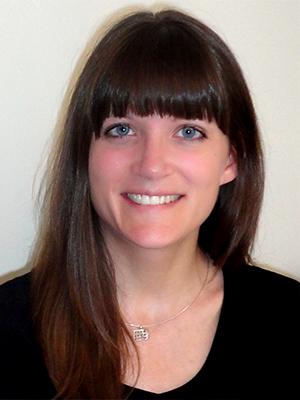Keynote Speakers
Christopher A. Hart
Biography
Christopher A. Hart is the founder of Hart Solutions LLP, which specializes in improving safety in a variety of contexts, including the safety of automation in motor vehicles, workplace safety, and process safety in potentially hazardous industries.
Until February 2018 he was a Member of the National Transportation Safety Board (NTSB). In March, 2015, he was nominated by President Obama and confirmed by the Senate to be Chairman, which he was until March, 2017. Prior to that he was Vice Chairman of the NTSB, after being nominated by President Obama and confirmed by the Senate in 2009 and 2013. The NTSB investigates major transportation accidents in all modes of transportation, determines probable cause, and makes recommendations in an effort to prevent recurrences. He was previously a Member of the NTSB in 1990, having been nominated by (the first) President Bush.
Mr. Hart’s previous positions have included:
- Deputy Director, Air Traffic Safety Oversight Service, Federal Aviation Administration,
- Assistant Administrator for System Safety, Federal Aviation Administration,
- Deputy Administrator for the National Highway Traffic Safety Administration (NHTSA),
- Deputy Assistant General Counsel to the Department of Transportation,
- Managing partner of Hart & Chavers, a Washington, D.C., law firm, and
- Attorney with the Air Transport Association.
Mr. Hart has a law degree from Harvard Law School and a Master’s Degree and a Bachelor’s Degree (magna cum laude) in Aerospace Engineering from Princeton University. He is a member of the District of Columbia Bar and the Lawyer-Pilots Bar Association, and he is a pilot with commercial, multi-engine, and instrument ratings.
Keynote Abstract
Autonomous Vehicles - Lessons From Aviation; Future Challenges
Automation presents the potential to save many lives on our streets and highways, but it also presents many challenges. This presentation is about two aspects of those challenges – those that can benefit from decades of automation experience in aviation, and those for which there is little experience because they have not generally been encountered before.
Aviation. More specifically, the presentation describes aviation experience that has demonstrated the importance of “Human-centric” automation, as opposed to automation “because we can.” Aviation has also shown that complete automation, i.e., with no human present, will not be capable of safe operation until automation designers develop “graceful exits” if (a) the automation fails or (b) the automation encounters unanticipated circumstances. Finally, as aviation automation has become more reliable, it has shown that humans are not good monitors of reliable systems.
Other. The presentation also describes several aspects of automation that have not previously been encountered or addressed in aviation. Included among that list are the importance of street testing; the lack of training for drivers; the frequency of software updates; the use of software that learns with experience; the relative ease of cyber attacks; the lack of federal standards; the competition between automakers re safety; and the need to address ethical concerns.
Angela Schoellig
Biography
Angela Schoellig is an assistant professor at the University of Toronto Institute for Aerospace Studies, an associate director of the Centre for Aerial Robotics Research and Education at the University of Toronto, and an instructor of Udacity’s flying-car nanodegree program. She conducts research at the interface of robotics, controls, and machine learning. Her goal is to enhance the performance, safety, and autonomy of robots by enabling them to learn from past experiments and from each other. Her team won the 2018 GM/SAE AutoDrive Challenge, a North-America-wide self-driving competition.
She is a recipient of a Sloan Research Fellowship (US/Canada-wide award, one of two in robotics); a Canadian Ministry of Research, Innovation & Science Early Researcher Award; and a Connaught New Researcher Award. She is one of MIT Technology Review’s Innovators Under 35 (2017), one of Robohub’s “25 women in robotics you need to know about (2013),” winner of MIT’s 2015 Enabling Society Tech Competition, a 2015 finalist in Dubai’s $1 million “Drones for Good” competition, and the youngest member of the 2014 Science Leadership Program, which promotes outstanding scientists in Canada.
Her PhD at ETH Zurich (with Prof. Raffaello D’Andrea) was awarded the ETH Medal and the 2013 Dimitris N. Chorafas Foundation Award (one of 35 worldwide). She holds both an M.Sc. in Engineering Science and Mechanics from the Georgia Institute of Technology (with Prof. Magnus Egerstedt) and a Masters degree in Engineering Cybernetics from the University of Stuttgart, Germany (with Prof. Frank Allgöwer). More information can be found at www.dynsyslab.org.
Keynote Abstract
Self-Driving Technology Today: What We Can and Cannot (Yet) Do
Over the past decade, our research has focused on algorithms that enable increased vehicle autonomy including vision, control and learning algorithms. We demonstrated these algorithms on different vehicle types ranging from drones and off-road driving vehicles to mobile manipulators. More recently, our team was selected as one of eight teams to compete in the North-American SAE AutoDrive Challenge, a three-year self-driving competition sponsored by General Motors among others. For this competition, we built a self-driving car in six months, took it to the Year 1 competition in Arizona in April 2018, and won!
The automation of vehicle behavior is particularly challenging when the vehicle operates in increasingly unpredictable and changing environments. Traditional robot algorithms largely rely on a-priori knowledge of the system and the environment, which is insufficient when requiring vehicles to deal with unseen situations. This is also reflected in self-driving car algorithms and explains why highway driving is much easier than city driving.
This talk aims to highlight current advances and limitations of self-driving technology with the goal of bridging the gap between user interface design and the current capabilities of self-driving technology. As self-driving technology is evolving rapidly, I would also expect automotive interfaces to be required to evolve quickly.

